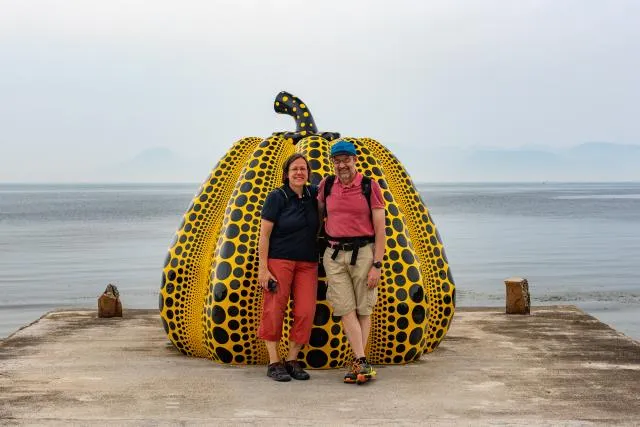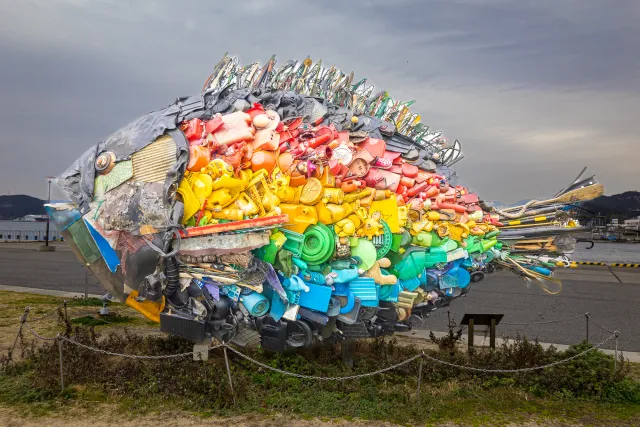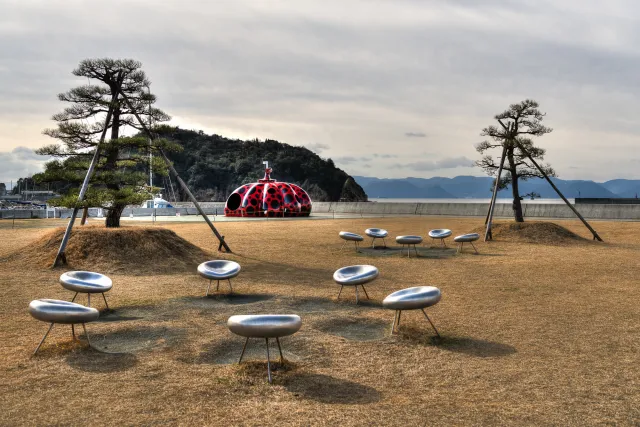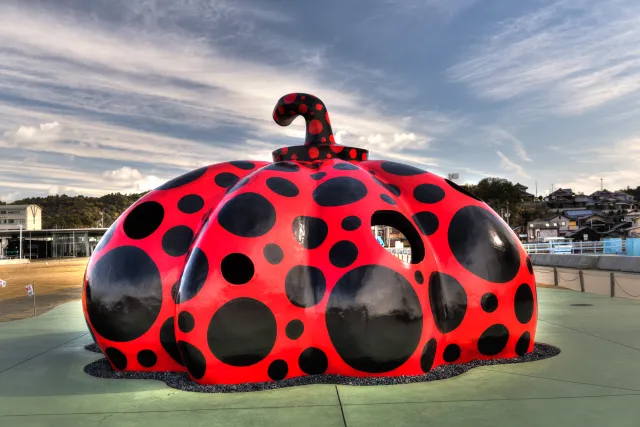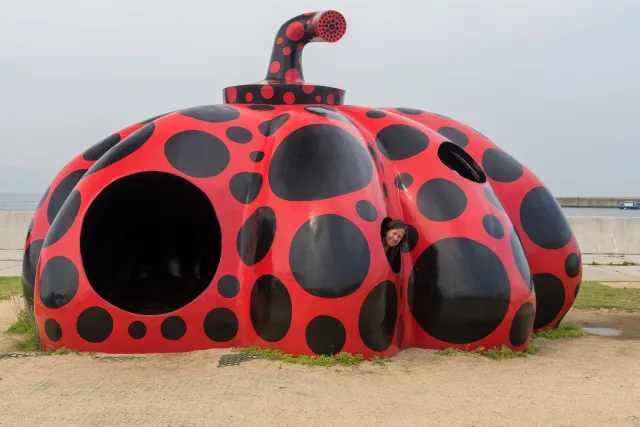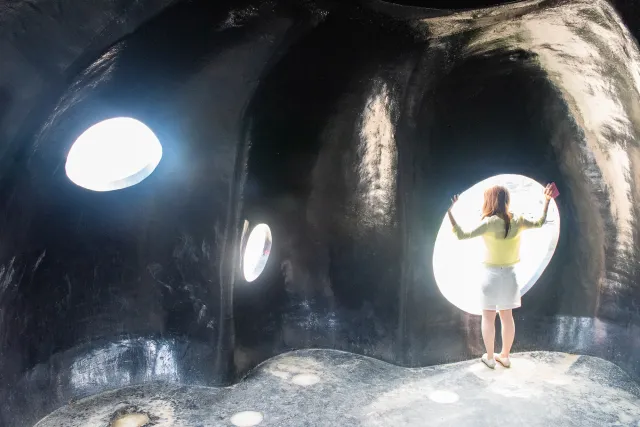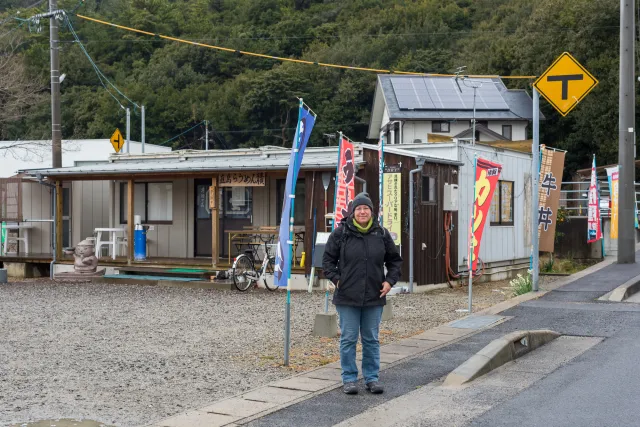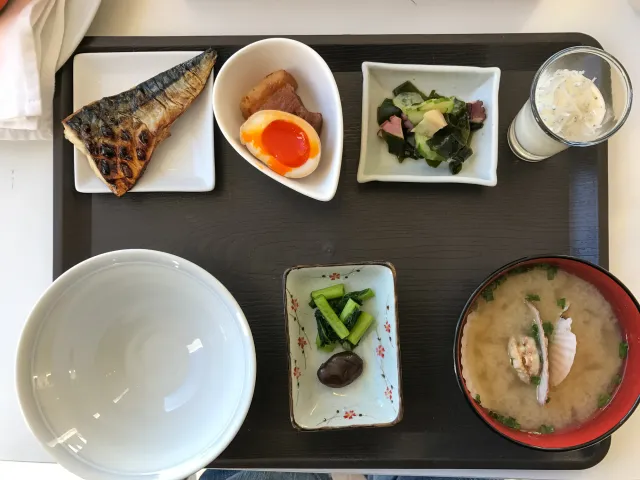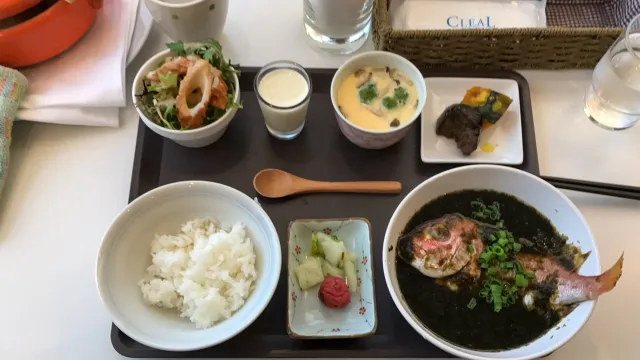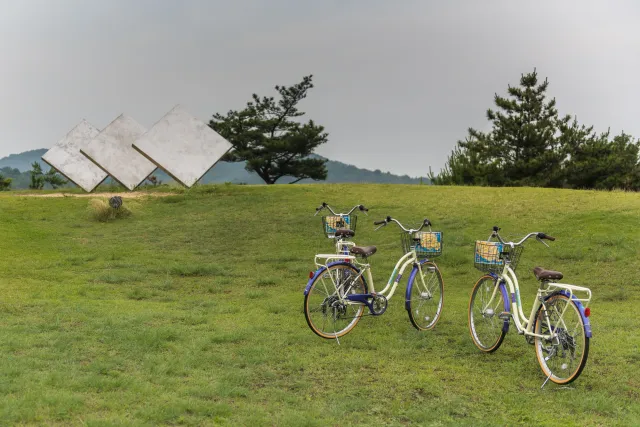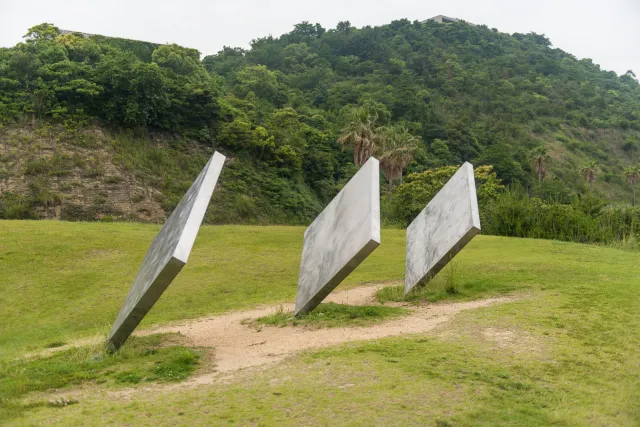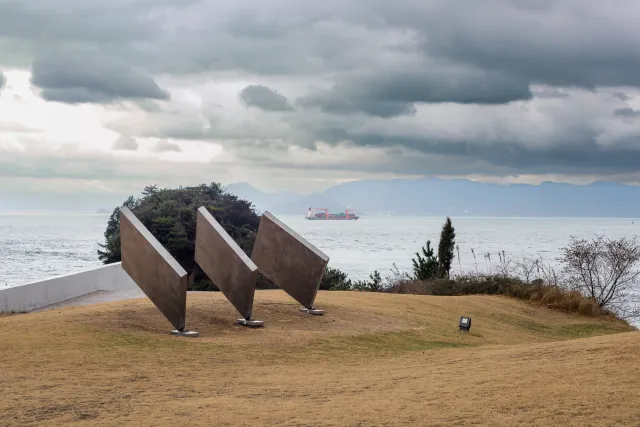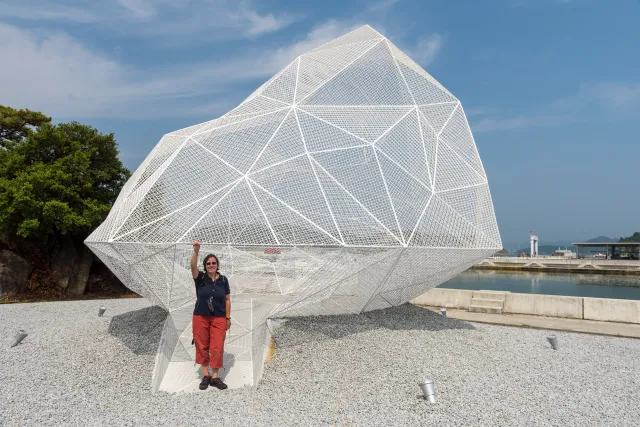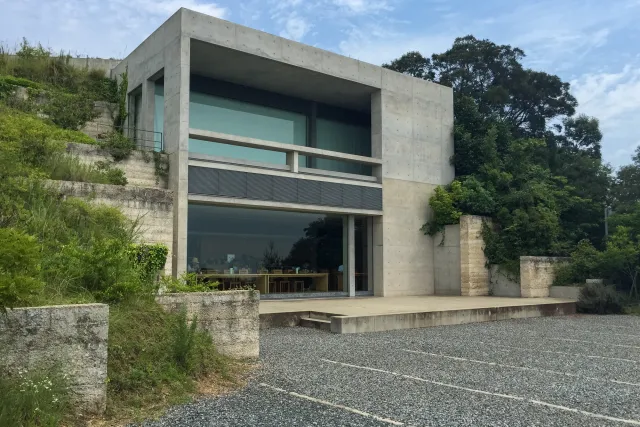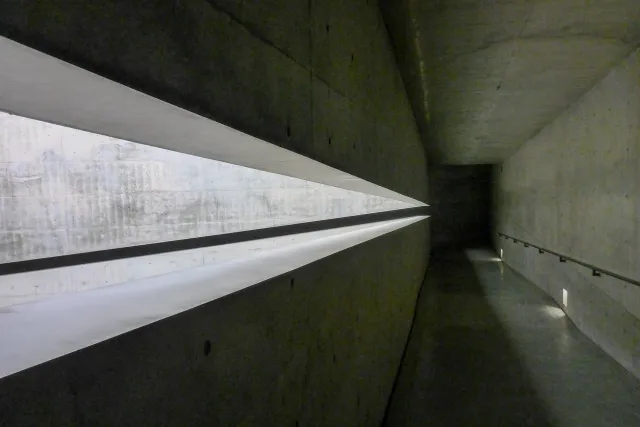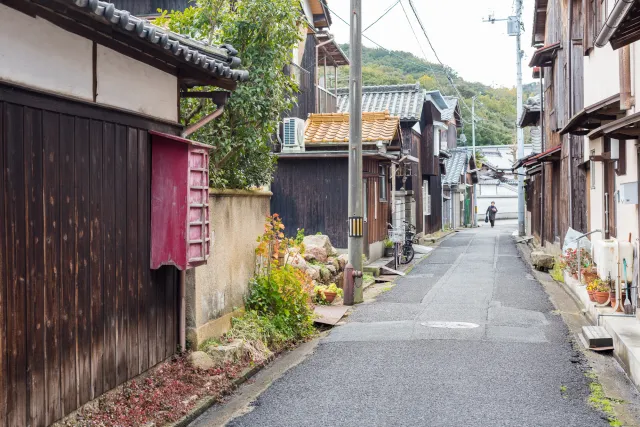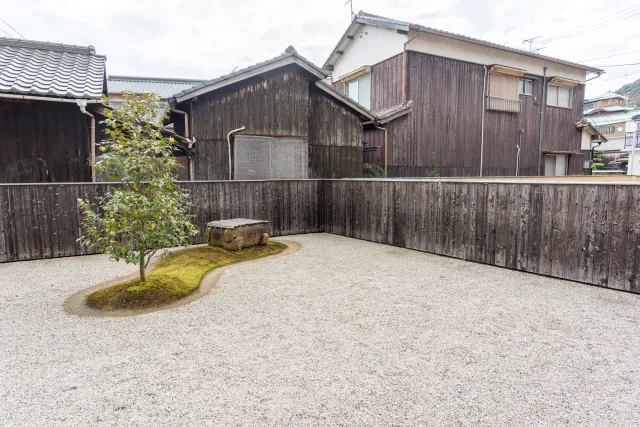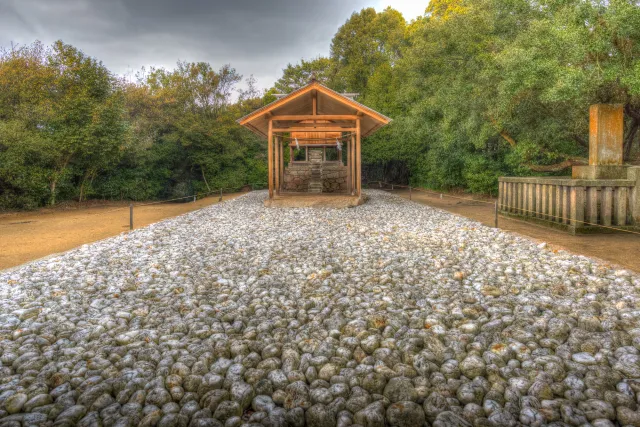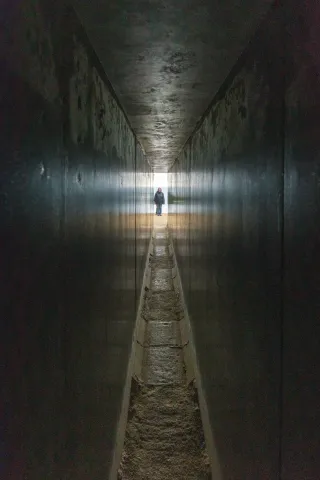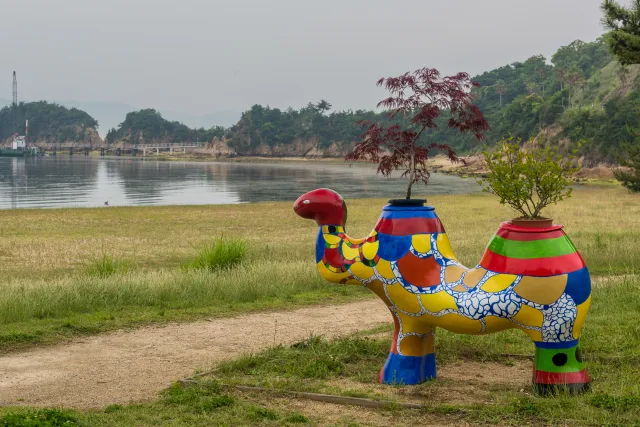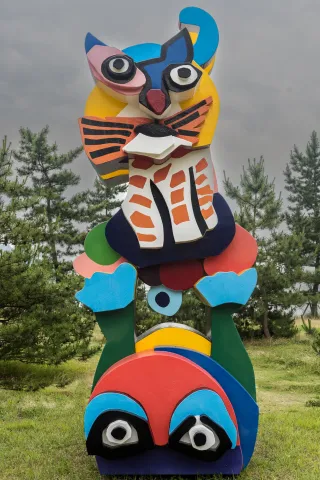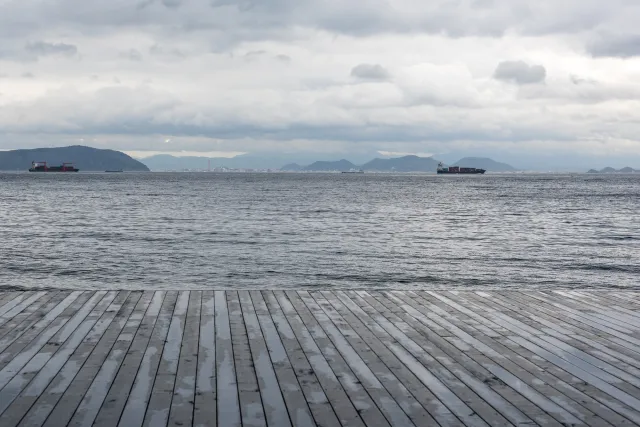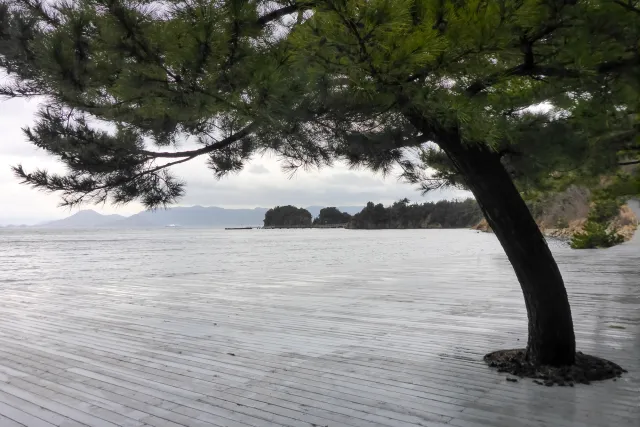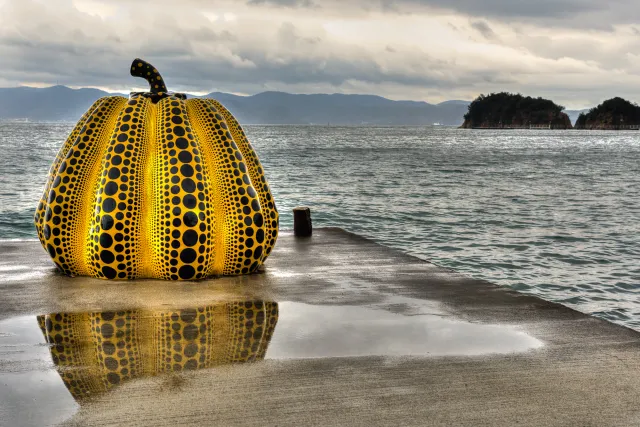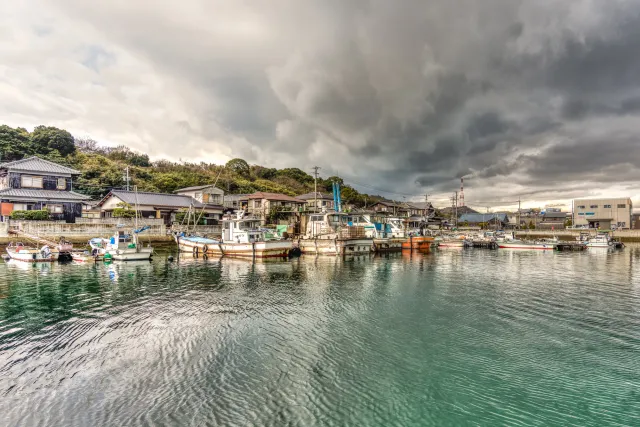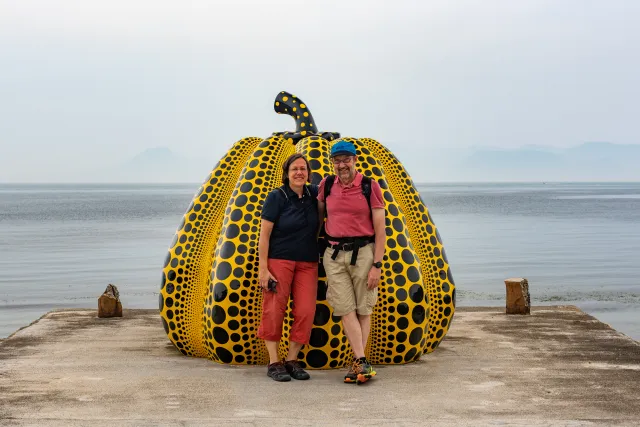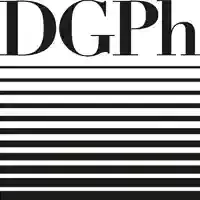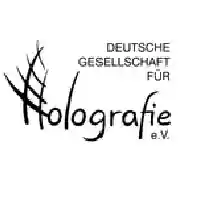While preparing for our trip to Japan in 2015, Karin discovered an article about Naoshima, the small art island in the Seto Inland Sea, which is surrounded by the large Japanese islands of Honshū, Shikoku and Kyūshū. Since we wanted to go to the prefecture of Kagawa, we also planned a day trip by train and ferry to the island and were finally so enthusiastic about the short trip that we traveled to this island again two years later but now spent a few days on Naoshima
You can get to the island from the Uno ferry port, for example. The installations of the "Black Porgy" by Yodogawa Technique are already inspiring. Plastic garbage, carelessly thrown into the sea, was collected by him and put together as a memorial to form a huge fish. Another similar construction nearby is even accessible and great fun for the children while the adults are pensive.
From here you can take the ferry to Naoshima, the former fishing island that has become more and more famous in recent years. This is partly due to the large pumpkin installations by the 92-year-old Japanese artist Yayoi Kusama. You are greeted by its big red pumpkin as soon as you arrive at the ferry terminal in Naoshima and the big yellow pumpkin at Benesse Art Park, a private organization of billionaire and publisher Soichiro, became the island's landmark after its installation in 1994. Unfortunately it was washed into the Seto Sea on August 9th of this year by a typhoon.
Art installations can be seen all over the island. Artists from far away but also residents have built many constructions in the former fishermen's houses in the Hommura Art House Project and we were very impressed by these installations. In a large room, for example, you can experience the silence in almost absolute darkness, while in other houses light installations cast a spell over you. The combinations of art and Japanese tradition are also particularly impressive. Hiroshi Sugimoto's Go'o Shrine invites visitors to marvel at a staircase made of glass blocks that extends from the depths into daylight. The exit is not for overweight people and claustophobics and the light phenomena in the long, extremely narrow exit area almost suggest a deliberate fusion of Christian and Shinto beliefs. So this shrine creates a special mystical experience.
The small island can be easily circumnavigated with rental bicycles to look at the many art objects and visit the museums. The Chichu Art Museum, which was designed by Japan's star architect Tadao Ando, is impressive. With its winding corridors, it is a masterpiece of avant-garde art that can be walked on and an excellent location for the light installations by James Turrell and Walter de Maria as well as the large water lily oil paintings by Claude Monet.
The oil paintings by Monet are connected to felt carpets, the small, pronounced square structures of which provide excellent cushioning in the exhibition space. Like nurses, Japanese women dressed all in white make sure that there are only the permitted number of visitors with slippers provided in the exhibition room.
The light installations by Turrel are literally celebrated. Is it just a crack above a staircase with blue light breaking out? At the command of the white clad, six people are allowed to climb the stairs side by side and with each step the narrow horizontal gap changes more and more into a large access to a sloping room. In this one can move up to a marking on the ground - otherwise a war signal sounds (oops, tried it out). If you turn around at this marking, you have the same impression as before from the outside and you are surprised: Did you actually get into the light-insulated, bluish room through this small gap?
Walter de Maria also has a special experience ready for visitors here. In a huge room, golden columns appear in groups of three along the walls and finally draw the eye to a large, black and reflective marble ball in the middle, which, depending on the time of day, throws different light reflections onto the golden columns or the entire room. Above it is a rectangular light passage through which you can see the clouds reflecting on the sphere. The room offers the open observer a special contemplative experience of nature, materials and shapes. The respective unique horizon of experience of the viewer reveals equally unique connections in the golden triad.
Tadao Ando also designed the Benesse Art House, which offers plenty of space for the works of artists such as Jasper Johns, Yves Klein and Jackson Pollock.
For the Setouchi Triennial 2010, the Lee Ufan Museum opened it shows works of the Korean contemporary artist Lee Ufan. You can see large installations made of stone, concrete and huge iron plates as well as a number of paintings from his earlier creative periods. The building of the Lee Ufan Museum was also designed by Tadao Ando in geometrically shaped reinforced concrete in the interplay between nature and open spaces.
On our second visit, we had a very nice little accommodation that had made an arrangement with the excellent restaurant across the street for the breakfast offered. We enjoyed living and eating here.
